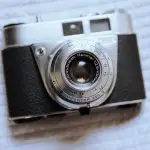Looking to repair your wool fabric? Wondering what kind of glue to use? You’ve come to the right place.
In this article, we’ll explore the types of glue that are suitable for repairing wool fabric and discuss the factors to consider when choosing the right glue.
We’ll also provide you with common glue application techniques and the pros and cons of using glue for wool fabric repair.
So, let’s get started and find out what is a good glue for repairing wool fabric.
Table of Contents
Types of Glue Suitable for Repairing Wool Fabric
You’ll want to look for glues that are specifically designed for repairing wool fabric. When it comes to repairing wool, not all adhesives are created equal. Certain types of glue work better than others for this delicate fabric.
One of the most common types of adhesive used for repairing wool fabric is fabric glue. Fabric glues are designed to bond fabric together, making them a great option for repairing small holes or tears in wool.
Another type of glue that can be used for repairing wool fabric is a clear drying adhesive. These types of adhesives are often used for various crafting projects, and they can also work well for repairing wool.
However, it’s important to note that using glue to repair wool fabric is not the only option. There are alternative repair methods that can also be effective. For example, sewing can be a great option for repairing wool fabric. By using a needle and thread, you can mend any holes or tears in the fabric without the need for adhesive. This method can be especially useful for larger repairs or when dealing with delicate wool fabrics.
Overall, when it comes to repairing wool fabric, it’s important to choose the right type of adhesive or consider alternative repair methods that will best suit your needs.
Factors to Consider When Choosing a Glue for Wool Fabric Repair
When choosing a glue for repairing wool fabric, there are two key factors to consider: bond strength and flexibility, and compatibility with wool.
Bond strength refers to how well the glue adheres to the fabric and holds the repair in place. Flexibility is important because wool is a natural fiber that can stretch and move, so the glue needs to be able to withstand these movements without cracking or breaking.
Additionally, it is crucial to choose a glue that is specifically designed for use with wool, as some glues may cause damage or discoloration to the fabric.
Bond Strength and Flexibility
The bond between the glue and the wool fabric should be strong and flexible. When repairing wool fabric, it is important to choose a glue with excellent adhesion properties and sufficient strength to withstand the wear and tear of everyday use. A strong bond ensures that the repaired area will not come apart easily, while flexibility allows the fabric to move naturally without causing the glue to crack or break. To help you choose the right glue for your wool fabric repair, here is a table comparing the strength and adhesion properties of different glues:
| Glue Type | Strength | Adhesion Properties |
|---|---|---|
| Epoxy | High | Excellent |
| Fabric Glue | Medium | Good |
| Super Glue | High | Excellent |
| Craft Glue | Low | Fair |
| Contact Cement | High | Excellent |
Compatibility With Wool
Choosing a glue that works well with wool is essential for a successful and long-lasting repair. Wool fabric characteristics and adhesive properties play a vital role in determining the compatibility between the two.
Wool is a delicate and porous material, known for its warmth and softness. Its unique structure consists of overlapping scales that create a natural resistance to water and stains.
When selecting a glue, consider its ability to bond with wool without causing damage or discoloration. Look for adhesives that are specifically designed for use with fabrics, as they tend to be flexible and provide a strong bond. Water-based adhesives are often recommended for wool, as they are less likely to cause shrinkage or distortion.
Always test the glue on a small, inconspicuous area before applying it to the entire fabric to ensure compatibility and avoid any unwanted consequences.
Common Glue Application Techniques for Wool Fabric Repair
When it comes to repairing wool fabric, it’s important to choose the right glue type that is suitable for this delicate material. There are certain glues that work best with wool and provide a strong bond without causing damage.
Along with selecting the appropriate glue, there are also application tips and considerations for drying time that can help ensure a successful repair.
Suitable Glue Types
You should consider using fabric glue or craft glue for repairing wool fabric. Here are four adhesive alternatives you can try:
-
Fabric glue: This adhesive is specifically designed for fabric repairs and works well on wool. It creates a strong bond and dries clear, ensuring a seamless repair.
-
Craft glue: Craft glue is another great option for wool fabric repairs. It is versatile and can bond a variety of materials, including wool. Look for a craft glue that is non-toxic and dries quickly for best results.
-
Epoxy adhesive: If you need an extra-strong bond, epoxy adhesive can be a good choice. It is durable and resistant to moisture, making it ideal for wool fabric repairs that may be subjected to wear and tear.
-
Fusible web: Fusible web is a thin adhesive sheet that can be ironed onto fabric to create a bond. It is easy to use and provides a permanent bond, making it suitable for small repairs on wool fabric.
Remember to always follow the instructions on the adhesive packaging for best results when repairing wool fabric.
Application Tips
For best results, it’s important to follow the instructions on the adhesive packaging when working with wool fabric.
When applying glue to repair wool fabric, there are some key techniques to keep in mind.
First, ensure that the fabric is clean and free of any dirt or debris.
Next, apply a thin layer of glue to both surfaces that need to be bonded together. Avoid using too much glue as it may seep through the fabric and leave a visible mark.
Press the surfaces firmly together and hold for a few seconds to allow the glue to bond.
Finally, let the glued area dry completely before handling or wearing the garment.
Drying Time Considerations
To ensure optimal results, it’s important to let the glued area dry completely before handling or wearing the garment. The drying time can vary depending on the adhesive option you choose for repairing your wool fabric.
Some adhesive options, like fabric glue or fabric adhesive tapes, have a relatively quick drying time of around 1-2 hours. These adhesives are formulated to bond fabric quickly and securely. However, it’s always best to check the specific drying time instructions on the adhesive product you are using.
Other adhesive options, such as fabric adhesives that require heat setting or fabric glue that requires overnight drying, may take longer to fully dry. It’s essential to follow the manufacturer’s instructions to ensure the adhesive has enough time to cure properly for a durable and long-lasting repair.
Pros and Cons of Using Glue for Wool Fabric Repair
The pros of using glue for repairing wool fabric include convenience and speed. Glue is readily available and easy to use, making it a convenient option for quick repairs. Additionally, glue dries quickly, allowing you to complete the repair in a shorter amount of time.
However, there are also cons to consider when using glue for wool fabric repair. One of the main drawbacks is the potential damage it can cause to the fabric. Some glues may contain harsh chemicals that can weaken or discolor the wool fibers. Another downside is the difficulty in undoing the repair if needed. Glue bonds are typically strong and permanent, making it challenging to reverse the repair without causing further damage to the fabric.
Alternative methods for wool fabric repair may be worth considering. These methods offer their own set of pros and cons. Some alternatives include hand sewing or using fabric glue specifically designed for delicate fabrics like wool. Hand sewing allows for more control and precision, minimizing the risk of damage to the fabric. On the other hand, fabric glue designed for delicate fabrics can provide a secure bond without the risk of damaging the wool fibers.
It is important to weigh the pros and cons of each method before deciding on the best option for your wool fabric repair needs.
Step-By-Step Guide on Repairing Wool Fabric With Glue
Now that you understand the pros and cons of using glue for repairing wool fabric, let’s dive into the step-by-step guide on how to repair wool fabric with glue. Using the right glue application techniques and considering the drying time is crucial for a successful repair.
Here is a simple table outlining the steps involved in repairing wool fabric with glue:
| Step | Description |
|---|---|
| 1 | Clean the damaged area of the fabric by gently brushing off any loose fibers or dirt. |
| 2 | Apply a small amount of fabric glue to the edges of the tear or hole. Be careful not to use too much glue as it may seep through the fibers. |
| 3 | Gently press the edges of the tear or hole together to ensure a secure bond. Hold it in place for a few minutes to allow the glue to set. |
| 4 | Let the repaired area dry completely before handling or wearing the garment. This drying time may vary depending on the type of fabric glue used, so be sure to follow the manufacturer’s instructions. |
| 5 | Once the glue is fully dried, check the repair to ensure it is secure and the fabric is back to its original state. |
Tips and Tricks for Successful Wool Fabric Repair With Glue
For successful repairs, make sure you apply just the right amount of glue to avoid seepage through the fibers.
When repairing wool fabric with glue, it is important to use proper glue application techniques to ensure a strong and seamless bond. Start by applying a thin layer of glue onto the damaged area, using a small brush or nozzle for precision. Be careful not to apply too much glue, as this can lead to excess seepage and potential damage to the fabric.
Additionally, consider the drying time of the glue before handling the repaired fabric. Some glues require longer drying times, so it is essential to follow the manufacturer’s instructions for optimal results. Patience is key during the drying process, as rushing can compromise the bond and effectiveness of the repair.
Lastly, always test the glue on a small, inconspicuous area of the fabric before applying it to the damaged section. This will help ensure compatibility and avoid any unwanted discoloration or damage.
Conclusion
In conclusion, when it comes to repairing wool fabric, it is important to choose the right glue that is suitable for the material. Consider factors such as the type of glue, its adhesive properties, and compatibility with wool.
While glue can be a convenient option for wool fabric repair, it also has its drawbacks. Follow the step-by-step guide and use the tips and tricks provided for successful repairs.
With the right approach, you can restore your wool fabric to its former glory.
- Can You Bleach Velvet Fabric? Risks, Alternatives & Safe Solutions - June 21, 2025
- Where to Buy Velvet Fabric: Top Retailers & Sourcing Tips - June 21, 2025
- What Is Crushed Velvet? Characteristics, Uses & Visual Appeal - June 21, 2025





